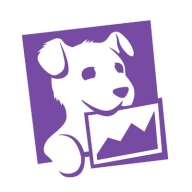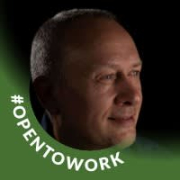

Datadog and VMware Aria Operations for Logs compete in the infrastructure and application monitoring domain. Datadog holds an advantage in cloud compatibility and ease of setup across varied environments, while VMware Aria Operations for Logs excels in integration with VMware products and robust on-premises capabilities.
Features: Datadog offers sharable dashboards, API integrations, and multi-cloud support with versatile platform integrations including AWS, Docker, and Splunk. Its intuitive tagging and seamless infrastructure monitoring enhance user experience. VMware Aria Operations for Logs excels in data security, cross-platform integration, and provides real-time insights with comprehensive log analysis.
Room for Improvement: Datadog users report complex pricing and sluggish query performance on large datasets, with a need for improved real-time usage visibility and APM customization. VMware Aria Operations for Logs users seek better licensing models, enhanced third-party integration, and more efficient log analysis and user interface functionality.
Ease of Deployment and Customer Service: Datadog is highly flexible with multiple deployment options, supporting both public and hybrid clouds. VMware Aria Operations for Logs is best for on-premises and hybrid environments. Datadog's customer service is mixed, primarily due to response times, while VMware Aria Operations for Logs generally receives positive feedback for proactive support.
Pricing and ROI: Datadog's pricing structure is usage-based with scalability but can lead to high costs, though it justifies this with time savings and operation visibility. VMware Aria Operations for Logs offers bundled pricing suitable for large virtual environments, though can be high for smaller setups. Datadog provides ROI through efficiency and reduced blind spots, whereas VMware Aria Operations for Logs is cost-effective for VMware-centric organizations.
Customer service and support have declined.
While support staff is knowledgeable, getting access to specialists can be challenging when dealing with the limits of a product.
I did not need technical support because I am a professional with VMware.
Since payment is based on hardware, scalability impacts are managed more effectively than with other tools paid by data volume.
It's relatively easy to find individuals with the skills to work with VMware because it is a widely spread tool.
Its stability is rated one hundred percent according to best practices.
VMware as a whole provides very stable tools.
Managing a lot of data involves reliance on hardware and network performance, which are external factors that can affect stability.
The documentation is adequate, but team members coming into a project could benefit from more guided, interactive tutorials, ideally leveraging real-world data.
In future updates, I would like to see AI features included in Datadog for monitoring AI spend and usage to make the product more versatile and appealing for the customer.
There should be a clearer view of the expenses.
It would be beneficial to have a roadmap for these dashboards to ensure consistent functionality.
There is also dissatisfaction with Broadcom's broader attitude, which is prompting me to search for alternatives.
VMware Aria Operations for Logs is not a cost-effective tool.
The setup cost for Datadog is more than $100.
The price has risen significantly, and for smaller customers, the cost can be up to ten times more than before.
Splunk, often paid by the terabytes, becomes expensive quickly if not managed carefully.
VMware comes with a lot of packages, however, it remains too expensive.
Our architecture is written in several languages, and one area where Datadog particularly shines is in providing first-class support for a multitude of programming languages.
The technology itself is generally very useful.
This tool also provides greater insight when integrated with VMware infrastructure, making it more precise than other tools.
The most valuable features are log centralization and long-term retention for logs.
VMware Aria Operations for Logs is a very stable product.
| Product | Market Share (%) |
|---|---|
| Datadog | 5.7% |
| VMware Aria Operations for Logs | 1.4% |
| Other | 92.9% |


| Company Size | Count |
|---|---|
| Small Business | 78 |
| Midsize Enterprise | 42 |
| Large Enterprise | 82 |
| Company Size | Count |
|---|---|
| Small Business | 7 |
| Midsize Enterprise | 9 |
| Large Enterprise | 12 |
Datadog integrates extensive monitoring solutions with features like customizable dashboards and real-time alerting, supporting efficient system management. Its seamless integration capabilities with tools like AWS and Slack make it a critical part of cloud infrastructure monitoring.
Datadog offers centralized logging and monitoring, making troubleshooting fast and efficient. It facilitates performance tracking in cloud environments such as AWS and Azure, utilizing tools like EC2 and APM for service management. Custom metrics and alerts improve the ability to respond to issues swiftly, while real-time tools enhance system responsiveness. However, users express the need for improved query performance, a more intuitive UI, and increased integration capabilities. Concerns about the pricing model's complexity have led to calls for greater transparency and control, and additional advanced customization options are sought. Datadog's implementation requires attention to these aspects, with enhanced documentation and onboarding recommended to reduce the learning curve.
What are Datadog's Key Features?In industries like finance and technology, Datadog is implemented for its monitoring capabilities across cloud architectures. Its ability to aggregate logs and provide a unified view enhances reliability in environments demanding high performance. By leveraging real-time insights and integration with platforms like AWS and Azure, organizations in these sectors efficiently manage their cloud infrastructures, ensuring optimal performance and proactive issue resolution.
Manage data at scale with centralized log management, deep operational visibility and intelligent analytics for troubleshooting and auditing across private, hybrid and multi-cloud environments.
We monitor all Log Management reviews to prevent fraudulent reviews and keep review quality high. We do not post reviews by company employees or direct competitors. We validate each review for authenticity via cross-reference with LinkedIn, and personal follow-up with the reviewer when necessary.